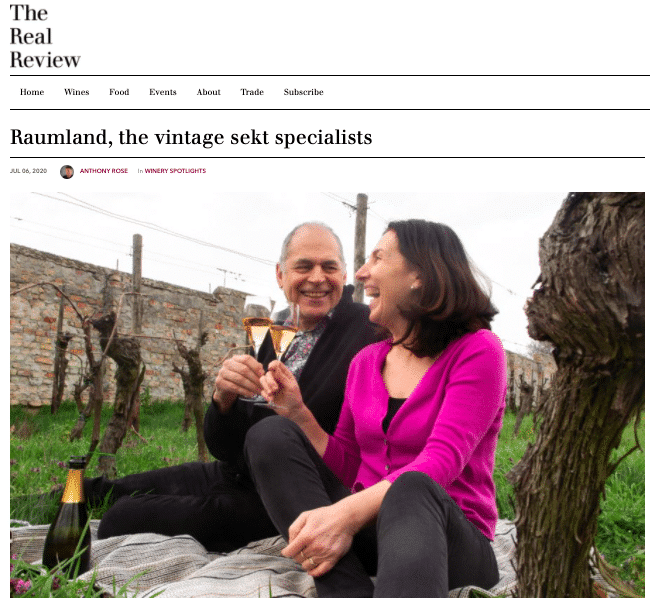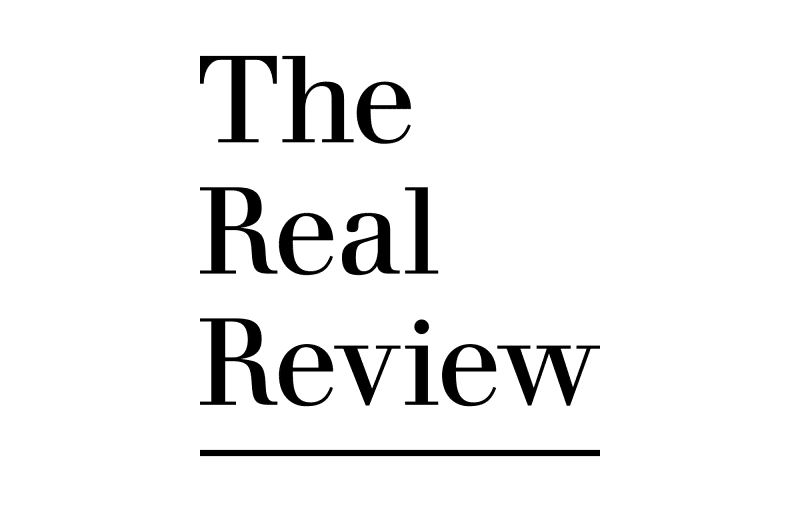The Real Review, Anthony Rose, July 2020

Raumland, the vintage sekt specialists
„Although the name might sound like a furniture showroom, Raumland is, in fact, the producer of one of Germany’s top sparkling wines and the first sparkling-only winery in the VDP. Volker Raumland is from a family winery owned by his parents, Willi and Hedi, in Bockenheim at the border of Rheinhessen and Pfalz. After studying sparkling wine at Geisenheim at a time when German sekt consisted of little more than the ‘industrial’ names of Rotkappchen and Henkell, he became the first to make sparkling wine in Rheinhessen. A total of 10 ha are destined for their sparkling wines, with 40% pinot noir, 40% chardonnay and the remaining 20% in riesling, pinot blanc and meunier.
In 1986, he bought a truck, installed it with the necessary machinery to produce fizz and placed an advertisement in the newspaper offering his sparkling wine services from his mobile truck. To his surprise, the mobile truck was soon much in demand and he and his wife Heide-Rose found a production site in Mölsheim from which to make their own sparkling wine.
A large, abandoned wine cellar on four stories, three of them below ground, it was initially too big for their needs, while today, it’s become too cramped to store the 1 million bottles that they currently need for storage purposes.
The region is on a similar latitude to Burgundy and rainfall is sufficient but not excessive because they are in the rain shadow of the Donnersberg Mountains, which also protect the vineyards from hail. Nights are cool and the days are warm, which is ideal for acidity retention.
Today they have 16 hectares (ha) in total in Rheinhessen and Pfalz. The original 4 ha are on the Dalsheimer Bürger, one of the VDP Grosse Lage and the others are in Bockenheim, in Hohen-Sülzen, and in Mölsheim. A total of 10 ha are destined for their sparkling wines, with 40% pinot noir, 40% chardonnay and the remaining 20% in riesling, pinot blanc and meunier.
In 1997, the Raumlands were joined by a young Champenoise, Carole Lefebvre, who showed them how to press the grapes in different fractions and brought with her the idea of picking for lower sugar levels and lower alcohols.
Thanks to Lefebvre, the Raumland sparkling wines were to become more ‘Champagne-like’, with only the cuvée used for their own sparkling wines and a minimum ageing period in bottle of 4.5 years adding complexity. At the same time, Volker Raumland stresses that his aim is not to copy Champagne because the vineyards, the soils, mainly terrafosca, muschelkalk and algenkalk, and the climate are all very different.
At the Mölsheim production facility, Volker Raumland devised a technique learnt from Ca’ del Bosco in Franciacorta and adapted it to his own production methods. After picking to 15-kilo crates, roughly 95% of the grapes are washed using this technique, with a cultured yeast to get the fermentation going, the remaining 5% of grapes with very ripe, thinner skins requiring greater care. The wines are not filtered but cold stabilised before tirage. All the wines undergo malolactic fermentation and the dosage is set at a maximum of 6 grams per litre. 100,000 bottles a year are made.
Since 2002, Raumland has been certified organic but it is not written on the label because they feel that the term ‘bio’ can have negative associations, or at least could have back in the day, even if things are different today.
Decisions are discussed from breakfast to dinner, by all the family, Volker, Heide-Rose and their two daughters Marie-Luise and Katharina, both of whom have worked a harvest at Gusbourne in England and both of whom have cuvées named after them. “We are different personalities,” says Marie-Luise. “I’m more thoughtful, Katharina is more impulsive, but we all have the same vision.”
Apart from the rosé, Raumland are vintage specialists. “We love the complexity of each single year and we want to communicate that each cuvée has the influence of the vintage,” says Volker Raumland. At the same time, they started putting aside reserve wines in 2018 in order to do trials for continuity à la NV Champagne. They even have a reserve cuvée with vintages going back to 1991, Marie-Luise’s birth year, which will be their 30th-anniversary flagship wine. The date of disgorgement is printed on the neck label.“


